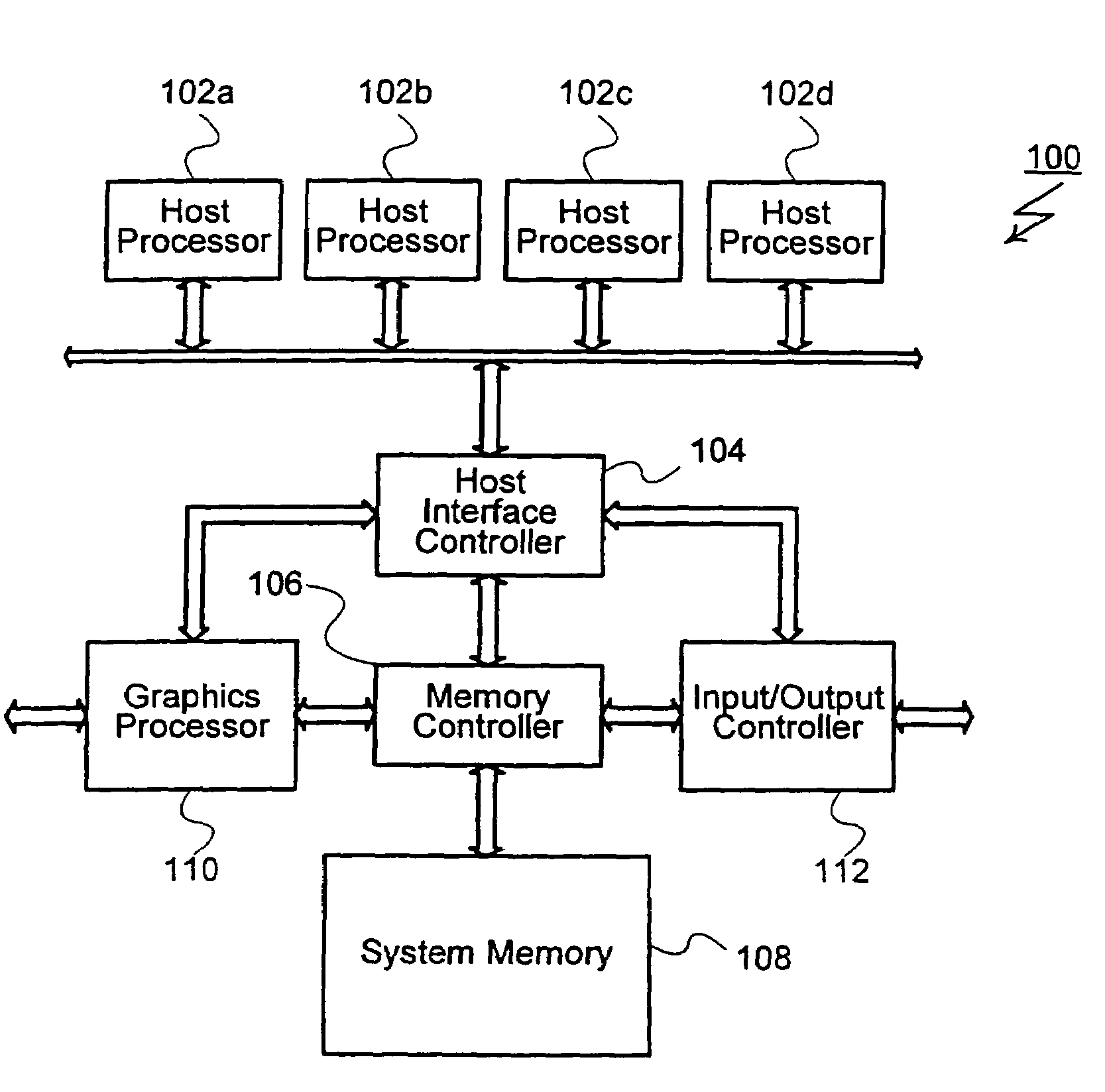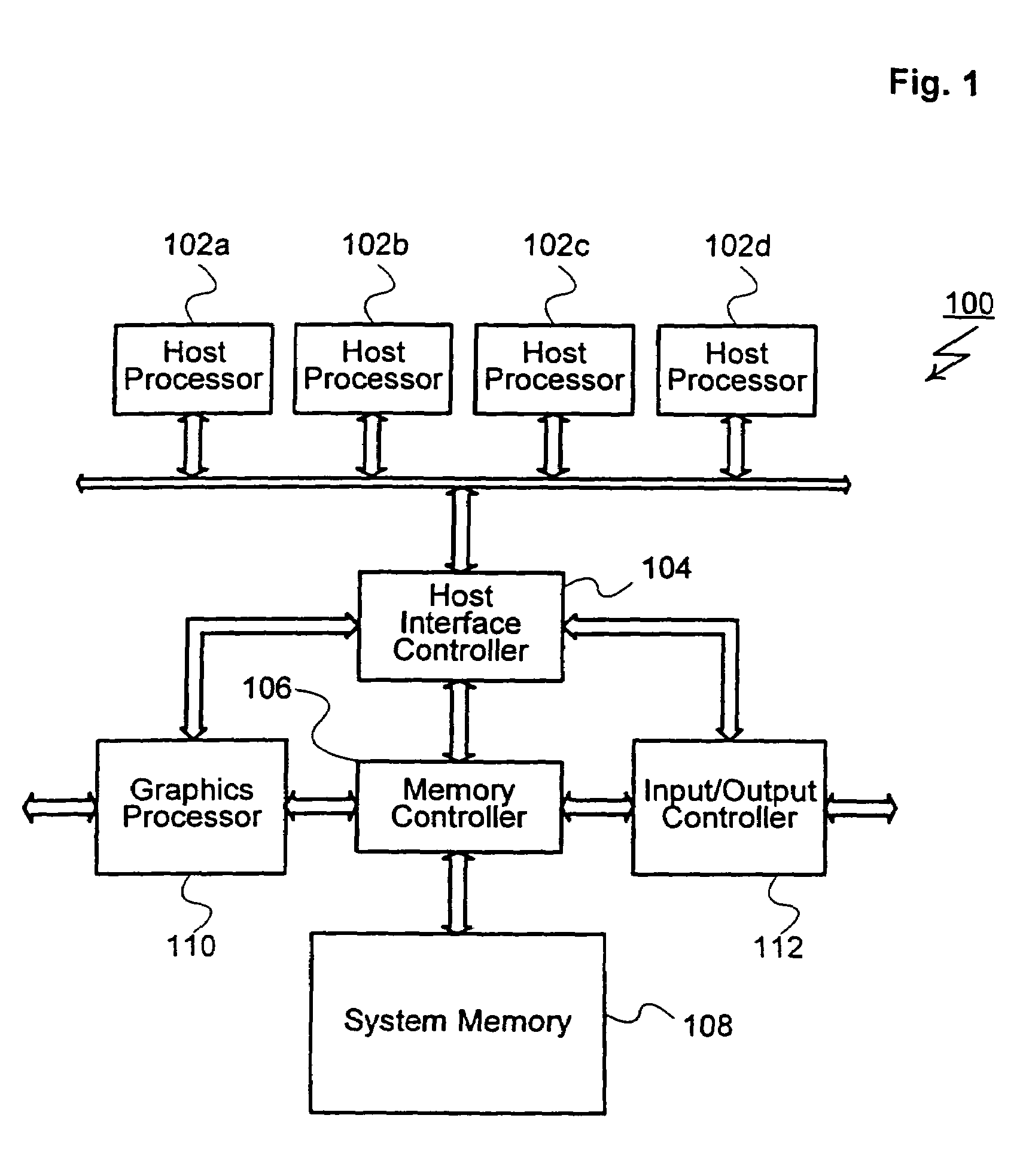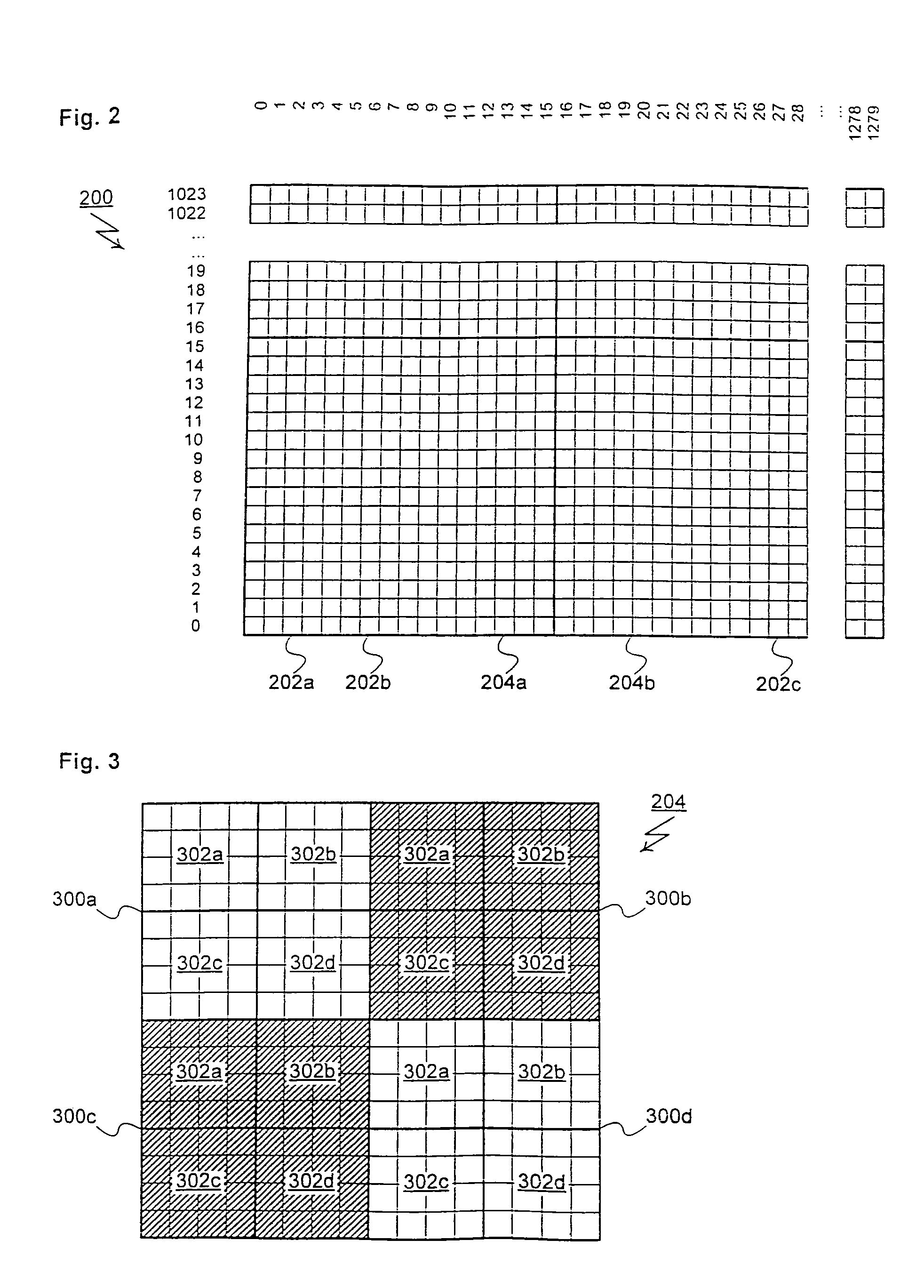Method and apparatus for rasterizing in a hierarchical tile order
a hierarchical tile and tile pattern technology, applied in the field of computer graphics, can solve the problems of reducing the number of accesses, reducing the complexity of dram use, so as to increase the temporal locality of accesses, enhance graphics throughput, and increase the temporal locality
- Summary
- Abstract
- Description
- Claims
- Application Information
AI Technical Summary
Benefits of technology
Problems solved by technology
Method used
Image
Examples
Embodiment Construction
[0031]Reference will now be made in detail to preferred embodiments of the invention, examples of which are illustrated in the accompanying drawings. Wherever convenient, the same reference numbers will be used throughout the drawings to refer to the same or like parts.
Environment
[0032]In FIG. 1, a host computer system 100 is shown as a representative environment for the present invention. Structurally, host computer system 100 includes a host processor, or host processors, of which host processors 102a through 102d are representative. Host processors 102 represent a wide range of commercially available or proprietary types. Host computer system 100 may include either more or fewer host processors 102 than the four shown for the representative environment of host computer system 100.
[0033]Host processors 102 are connected to a sequence of components beginning with a memory request unit 104 followed by a memory controller 106. Memory controller 106 is followed by a system memory 108....
PUM
 Login to View More
Login to View More Abstract
Description
Claims
Application Information
 Login to View More
Login to View More - R&D
- Intellectual Property
- Life Sciences
- Materials
- Tech Scout
- Unparalleled Data Quality
- Higher Quality Content
- 60% Fewer Hallucinations
Browse by: Latest US Patents, China's latest patents, Technical Efficacy Thesaurus, Application Domain, Technology Topic, Popular Technical Reports.
© 2025 PatSnap. All rights reserved.Legal|Privacy policy|Modern Slavery Act Transparency Statement|Sitemap|About US| Contact US: help@patsnap.com



